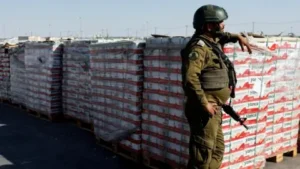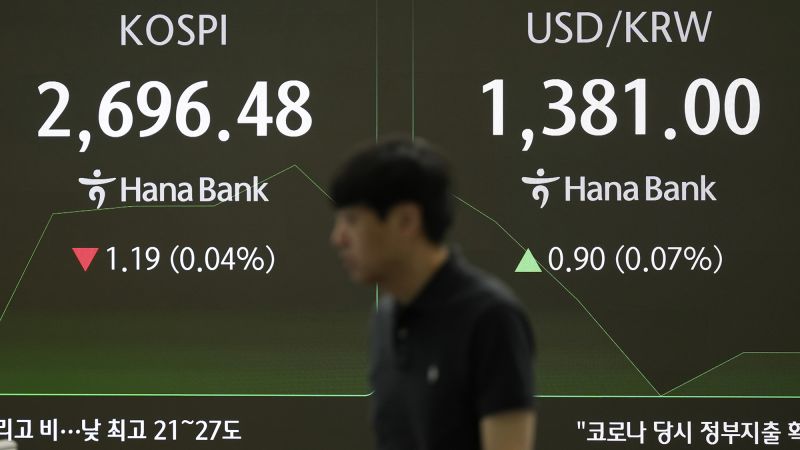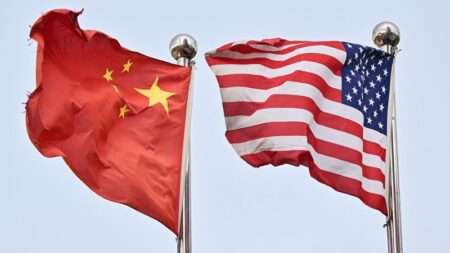Global financial markets exhibited a noticeable downturn on a recent Monday, primarily spurred by heightened trade tensions between the United States and China. Investors were especially concerned following President Donald Trump’s announcement to double tariffs on America’s steel imports. This development has led traders to reevaluate their strategies amid the uncertain political climate and the potential economic repercussions of the escalated trade war.
In the Asian markets, stocks reflected this apprehension. Hong Kong’s Hang Seng index fell by 0.6%, while Australia’s S&P/ASX 200 and Japan’s Nikkei 225 saw declines of 0.2% and 1.3%, respectively. Interestingly, South Korea’s KOSPI managed to eke out a slight gain, closing up by 0.1%. These mixed signals underscored the volatile sentiment investors were grappling with in the region.
As trading transitioned to Europe, the situation did not improve significantly. The Stoxx Europe 600 index dropped 0.4% by 6:12 AM ET, with Germany’s DAX and France’s CAC also suffering losses of 0.5% and 0.6%. Meanwhile, the London FTSE 100 remained flat, indicating cautious waiting as traders processed unfolding events. This dim outlook persisted in US futures, where S&P 500 futures fell by 0.5% and Dow futures by 0.4%. The tech-heavy Nasdaq index fared worse, slipping 0.7% before the market opened.
Despite the legal hurdles facing Trump’s tariff policy from the previous week, he amplified his stance within the trade conflict last Friday. The President accused China of breaching a trade agreement reached the previous month, which had proposed a significant rollback of tariffs on goods between the two nations. In response, Beijing described the U.S. as instigating “new economic and trade frictions,” marking a further deterioration of relations.
Trump’s proposed tariffs on steel imports were indicated to be set at a staggering 50%, effectively increasing the previous rate and aiming to bolster the American steel industry. He expressed this at a U.S. Steel facility in West Mifflin, Pennsylvania, asserting, “At 25%, (the US’s trading partners) can sorta get over that fence. At 50%, nobody’s getting over that fence.” Such comments amplified the fears of further retaliatory measures from trading partners.
The European Union was quick to respond, promising to retaliate unless a “mutually acceptable solution” with Washington could be brokered. Olof Gill, the European Commission spokesperson for trade, warned that without a negotiated agreement, countermeasures would automatically kick in, potentially as soon as July 14th. This looming threat of tit-for-tat tariffs has left investors feeling uneasy about future market conditions.
Paul Donovan, chief economist at UBS Global Wealth Management, provided insights into the market’s psychology surrounding the tariff threats. He noted a difference in market sentiment, suggesting that while it was previously assumed the U.S. would retreat from tariff threats, confidence around such a scenario was waning with respect to steel tariffs. He elaborated that these tariffs were not impacted by recent court rulings that temporarily blocked Trump’s prior global tariffs but were restored almost immediately after.
The overarching sentiment conveyed by market analysts suggested that investors were warily observing Trump’s tariffs, particularly in context with past instances of his proposals being reversed. Experts opined that the recent market declines could be a reaction to the perceived seriousness of the tariff declarations and the potential for escalation in the trade conflict.
Susannah Streeter, head of money and markets at Hargreaves Lansdown, characterized the current market conditions as a result of “new fractures in the global trade war.” She expressed concern that these measures would result in significant disruptions for steel manufacturers worldwide, cautioning that Wall Street appeared poised to enter the week on a negative note.
Compounding these issues, with the U.S. being the world’s largest importer of steel, the introduction of tariffs threatens to exacerbate inflationary pressures in the domestic economy. While some market analysts like Chris Beauchamp of IG remarked that the declines were relatively restrained, they noted a prevailing expectation that Trump might ultimately retreat from imposing these tariffs. The underlying sentiment emphasized a wariness regarding the potential fallout from a full-scale trade war, suggesting that investors were bracing for challenges ahead but holding out hope that calmer minds might prevail in negotiations.











